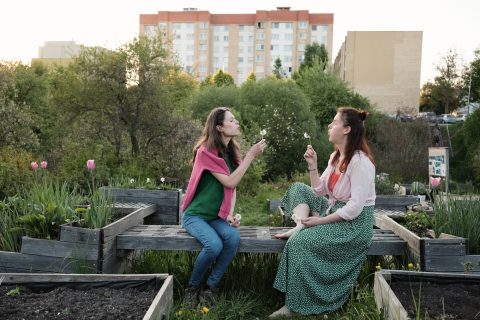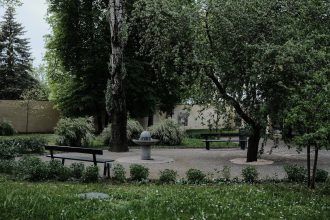Pažaislis Monastery – one of the finest examples of late Baroque in the whole region, which was specially protected even when the Nemunas river was being dammed during the occupation – is the pride of Kaunas. One part of the complex – the gardens – has been nurtured here for hundreds of years. The fruit trees, which are still flowering successfully, are now welcoming visitors to one of the country’s best restaurants, Monte Pacis, and the chef Raimundas Dambrauskas together with the founder, Indra Ramanauskienė talked about the menu inspired by the local produce.
Story older than the monastery
The gardening traditions of this place go back even further than the 17th-century Baroque complex. Kristupas Zigmantas Pacas, who funded the Pažaislis Camaldolese Monastery, acquired the land from Samuelis Oborskis, a judge of the Kaunas Land Court, on 22 May 1664. The deed of sale states that the former owner sold the land with the manor house, tillable land, and fields as well as hop gardens and orchards.
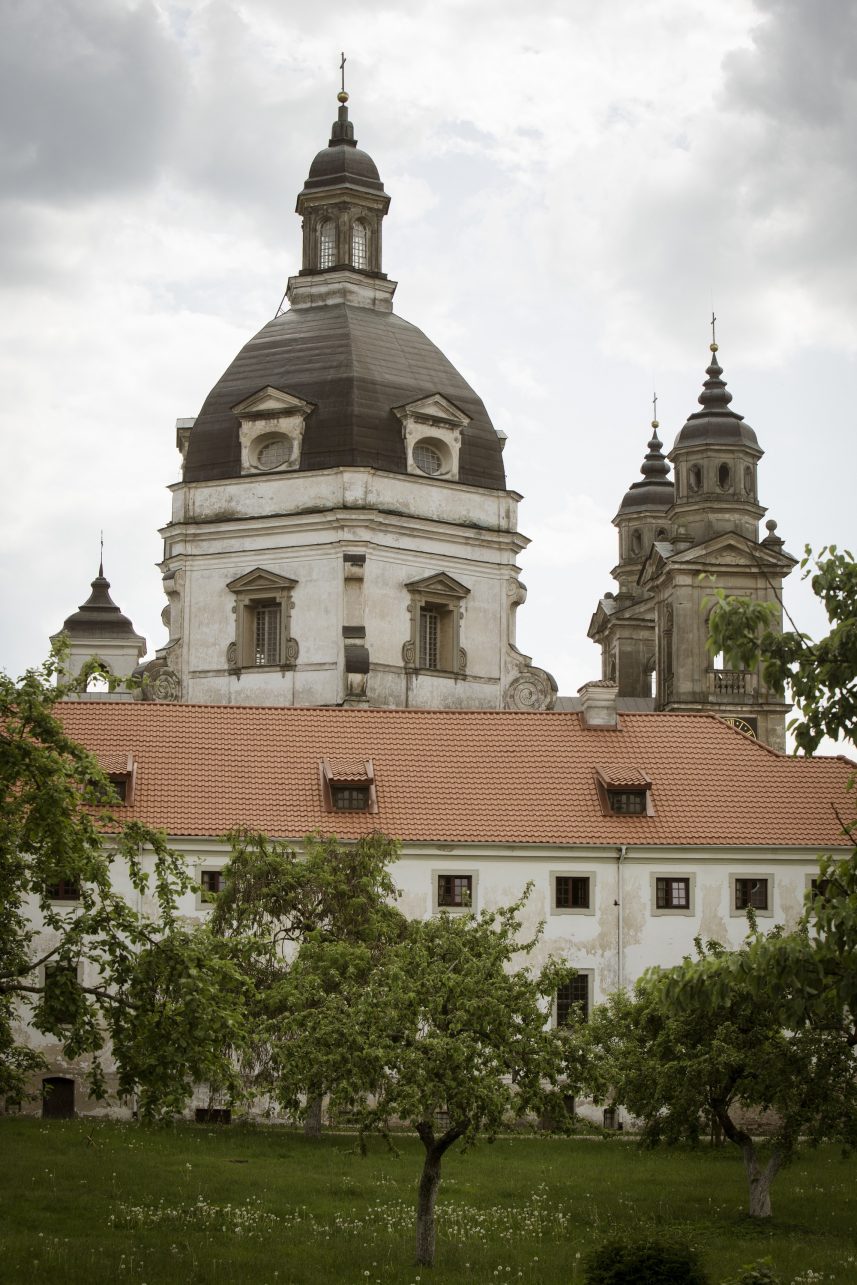
The monks have nurtured the various plants here since they moved in. According to sources, between the end of the 18th and the beginning of the 19th centuries, there were around 300 fruit trees in the area, including pears, apples, plums, and cherries. In the middle of the 18th century, there are also references to the rarer plants grown in the Pažaislis gardens, such as grapes and walnut trees.
It was the apple that became the hallmark of the monastery’s gardens cherished to this day. Many who visit the place in autumn will leave impressed by the eye-popping architecture and also with their pockets full: the tradition of sharing fruit dates back to the interwar period.
The Camaldolese did not eat meat, so vegetables and fruit were very important to the monastery. Of course, as in many other monasteries, there was also an important economic aspect: the produce could be sold. Plant cultivation was also one of the monks’ leisure activities: they worked on both communal and individual plots.
Inherited recipes
“Last year, by chance, we found the menu for a dinner held here in 1904. It consisted of 8 dishes, all of which we recreated as best as we could, after all, we didn’t have detailed technological descriptions. Such extensive tasting menus were not common. The menu is vegetarian: we worked with fish and vegetables,” Chef Raimundas Dambrauskas, a long-term Monte Pacis employee, tells us at the beginning of the meeting.
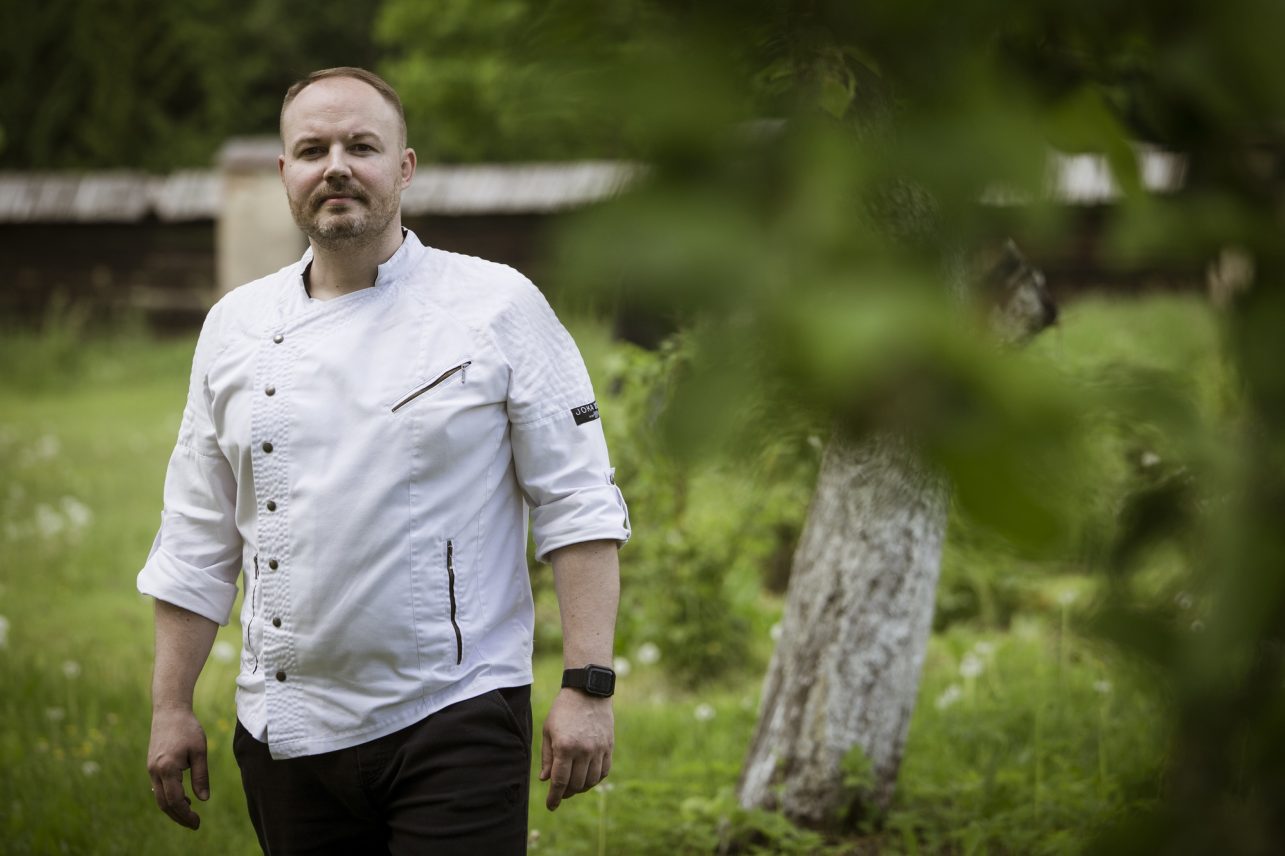
Raimundas is a Kaunas resident, a biker in his spare time, and, according to his colleagues, a miracle worker as well. As he says, food is built into his DNA: his father always cooked a lot at home, his grandfather was a butcher, and his grandmother was always cooking up a storm. The representatives of the restaurant don’t hide the fact that they learned some things from the monks as well. The Sisters of the Order of St Casimir, who carry on the tradition here, shared bread recipes that they continue to bake themselves. The Easter cake, which takes a long time to soak and age to achieve the desired flavor, has also been very popular.
Sustainable and environmentally friendly
Hidden behind a high fence, one of the monastery’s gardens, which is now maintained by the Monte Pacis team, does not resemble an ornamental tree plantation. The aim here is clearly quality produce and a consistent harvest, not just the aesthetic aspect of the garden.
The first thing Raimundas does after coming to work is meditation. He walks around the garden beds, examines the plants, picks the ripe fruit, and then, after thinking about what can be made from them, he returns to the stainless-steel kitchen table to create.
The aforementioned apples and pears, as well as asparagus, currants, tomatoes, strawberries, and various edible flowers, become aesthetic masterpieces on plates. You can see three beehives in the distance where local honey from the garden’s flowers is also collected.
“We strive to keep everything sustainable, fresh, and of the highest quality. We try not to throw anything away, to consume it immediately, or to prepare it for further consumption. We like unexpected combinations; we try to find new ones. We use everything that is edible, and we don’t leave anything to rot,” the modest kitchen maestro continues.
Blossoms and preserves
Indeed, the menu here includes something you wouldn’t expect if you were used to traditional 20th-century Lithuanian cuisine. For example, the blossoms of lime trees growing nearby, become the basis for ice cream. The blossoms of the monastery’s rosary are also incorporated into the desserts, both for flavor and decor.
“Our cuisine is seasonal, dictated by farm produce and other local supplies. The menu changes with the seasons, i.e., twice a year. What we don’t use in the summer, we pickle, ferment, make chutneys and jams, or choose other, more interesting preservation methods that allow us to enjoy our own produce for longer,” Raimundas says.
According to him, the restaurant’s menu is neither purely Lithuanian nor purely European. It combines practices from different cultures: Asian-inspired recipes, Italian or French techniques, and Lithuanian products.
The wine is also inspired by an ancient monk’s recipe and uses apples and hawthorn. The only difference is that it is not produced locally but in the workshop of the renowned Lithuanian winemaker Raimundas Nagelė. As you know, Lithuania has strict laws on alcohol production.
The EU is to blame
Having just arrived at the monastery, while talking to photographer Donatas, I’m surprised when I’m flooded with vague memories. It turns out that the founders of the hospitality complex that we are visiting had previously owned another well-known venue in Kaunas: Sadutė restaurant. Although I didn’t get to visit it because I was too young, I remember well my adolescent wishes to get as close to the spot where the coolest people in Kaunas gather.
“We had a good and well-functioning business; everything was going well. We didn’t plan anything, we refused all offers to expand. Then one cold winter day, we received an offer from the nuns, for whom we sometimes provided catering services, to visit and see the completed renovation of Pažaislis Monastery. We returned in silence,” the founder of Monte Pacis Indra Ramanauskienė says.
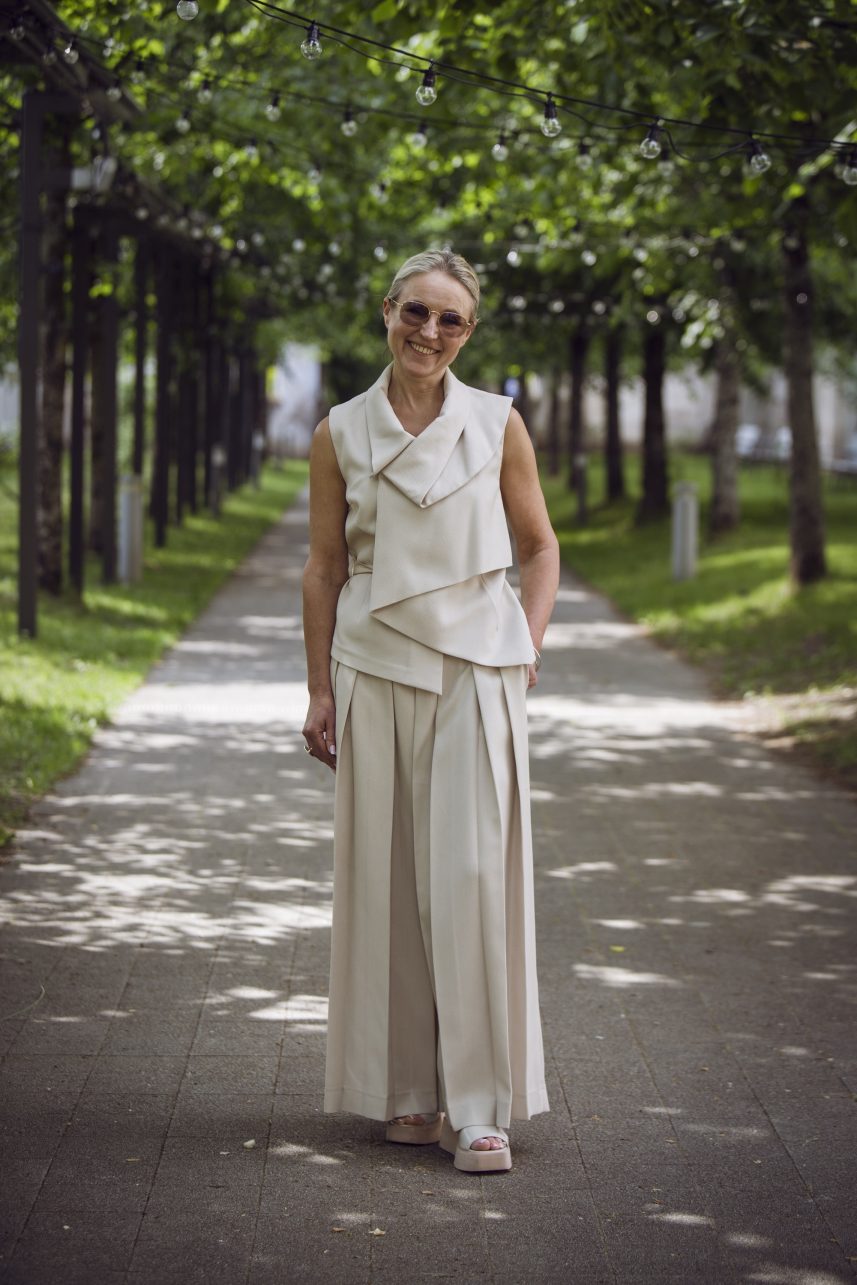
And we ‘blame’ the European Union for this. One of the conditions of the funding provided by Structural Funds for the renovation was the development of hospitality services in the renovated Pažaislis. One thing led to another, and soon Indra and her husband sat down to write. He did the calculations, and she worked on the concept. And what do you know – the idea convinced the municipality in an open tender. And it still does after ten years.
Finances are not the hardest part
The first year was not easy. As the owner herself says, the restaurant was inspected by all the existing institutions because there has been a lot of public discontent. None of them found anything wrong either in the kitchen or in the accounts.
“I love this place. There were some difficult moments, but I remember the words of one of my nun friends: don’t expect to look down when you’re on a mountain; you will just be more visible. I fell in love with the place. I drive past a hydroelectric power station as the sun rises, and as I get closer to the ensemble, all my worries disappear,” Lithuania’s first female sommelier says. Although part of the monastery, where the restaurant and hotel are located, has been renovated, it was the owners who had to furnish everything. According to them, finances are not the hardest part.
“It is the heritage regulation. We are in one of Lithuania’s most famous architectural monuments, after all. Initially, we were not allowed to do many things, such as glass terraces. That’s why we had to deal with umbrellas from a beer manufacturer for the first year because it took months of deliberations on the details. The Department of Cultural Heritage is careful about placing signatures. I understand them, we all have to be sensitive in a place like this,” Indra continues. When asked about her plans for the future, the owner does not spill all her beans: there are certainly plans, but God willing. After all, Monte Pacis is working right next door to Him.


